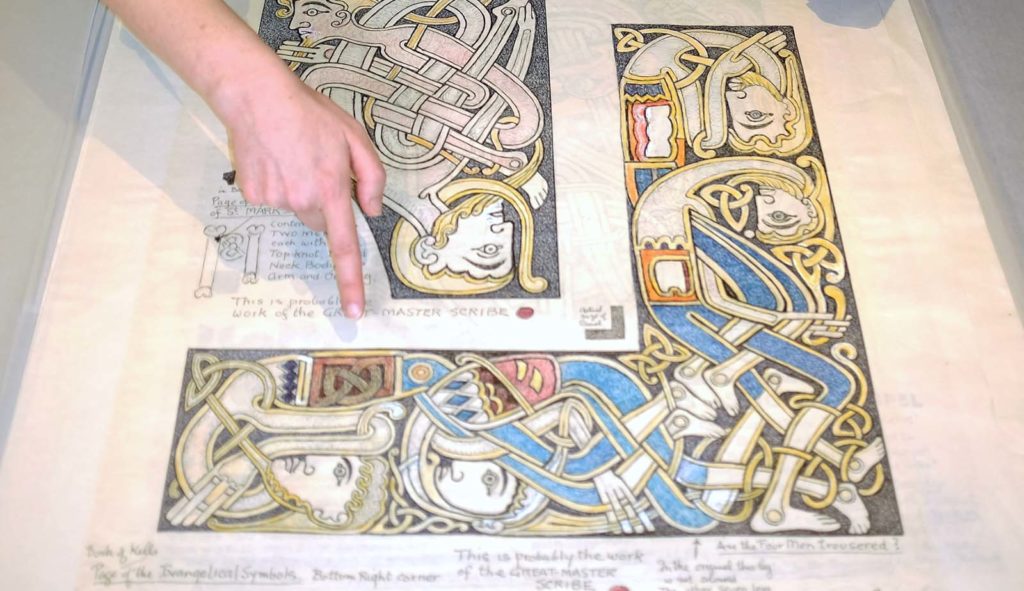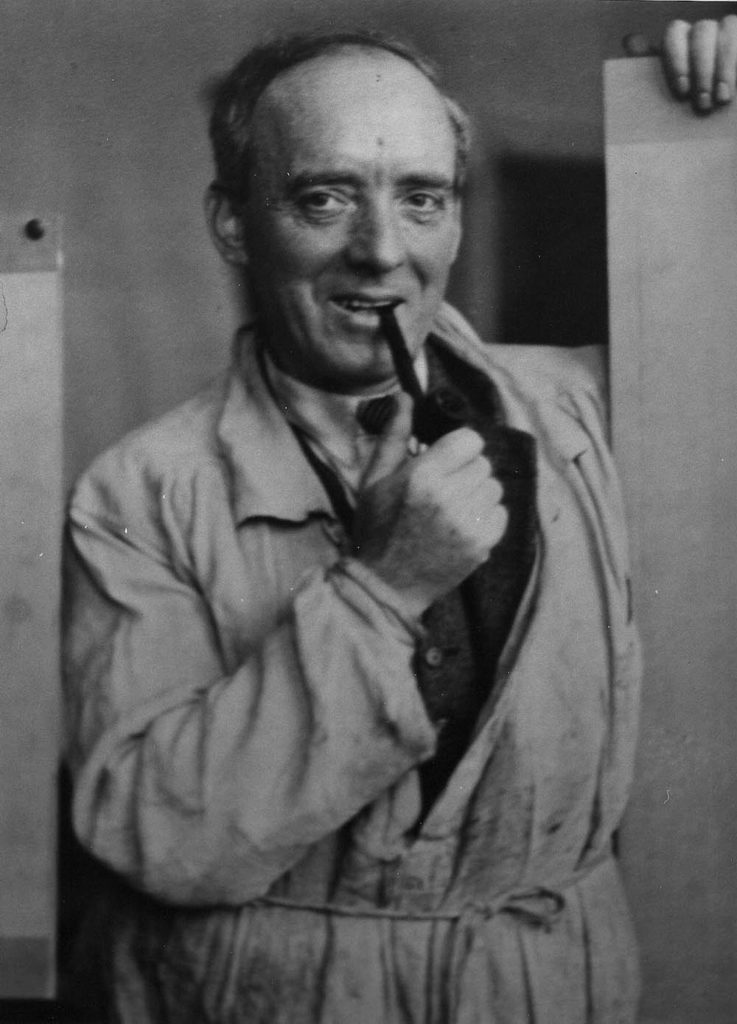
Bird, serpent, beast and man fill a small square on a page in the Book of Kells, created over 1200 years ago. George Bain made this large detailed drawing so his students could see the skill of the original scribe.
A new website sharing George Bain’s explorations into Celtic and Pictish art is continuing the pioneering work of the father of modern Celtic Art
During the 1920s the illustrator, watercolourist, designer, and art teacher George Bain became captivated by the illuminated manuscripts and ornate metalwork created in the northern British Isles from the 600s to the 800s AD.
The Pictish carved stones that lay littered across the Scottish landscape, the Book of Kells and the Lindisfarne Gospels all fascinated the young artist and he quickly developed a vision of a living, creative Celtic and Insular craft that endures to this day.
more like this
Bain was determined to understand the Celts’ and Picts’ artistic styles, and he produced numerous detailed drawings by analysing and deconstructing designs found on Pictish sculpture and knotwork metalwork as well as the illuminated manuscripts of the period.
Born in 1881 in Scrabster in Caithness, his family moved to Edinburgh in 1888, where at fourteen he worked at an Edinburgh printer and enrolled for part-time study at the School of Applied Art and the Edinburgh School of Art.

Embossed and stitched leather handbag designed by George Bain but possibly made by one of his students or a member of his family.

An early version of Methods of Construction by George Bain George Bain’s passion was to bring together methods for drawing Celtic interlaced art that anyone could use. This illustration is dated 1935 but it wasn’t until 1945 that his first booklets appeared.
Aged 21, he won a place at London’s Royal College of Art and worked as a freelance newspaper artist before returning to Edinburgh in 1905 where he continued to work as an illustrator and in the applied arts while studying at the Royal Scottish Academy Life School.
Marriage to Jesse in 1908, family life and active service during the First World War in the Royal Engineers never dimmed his devotion to the production of art and after the war he became a principal art teacher at Kirkcaldy High School.
It is thought that this is when he first developed his passion for Celtic art, which continued with vigour after he retired in 1946 and moved to Drumnadrochit in Glen Urquhart, where he founded the College of Celtic Cultures to train Highland craftspeople in Celtic art.
The painstaking work he undertook to unlock the methods of Celtic artists eventually resulted in a series of ground-breaking illustrations that explored how the designs were created. Published in the 1950s via the series of popular instruction manuals Celtic Art: The Methods of Construction, Bain’s mathematical frameworks for constructing Celtic art, which not only enabled people to understand the historical works better but to also make their own designs, soon became essential reference books.
When they were reissued in the 1970s they also triggered a rise in popularity of a style of artwork that can today be seen in everything from album sleeves and interior décor to jewellery and tattoos.

George Bain’s drawings of capital letters from Kells. George Bain had a particular interest in the capital letters that were used in the Book of Kells. He studied their design and included them in his book Celtic Art, Methods of Construction.
Now, thanks to a heritage project managed by Groam House Museum (home to the George Bain collection) and funded by Museums and Galleries Scotland, Bain’s designs can be accessed for free online.
The George Bain Collection contains nearly 3,000 items including drawings and hand-drawn plates for his books together with many other designs, sketches, drawings and paintings. The website displays many of them together with a significant selection of Bain’s forays into applied art including carpets, leatherwork, woodwork, embroideries, ceramics and knitting designs.
Online visitors will find everything from machine woven rugs featuring interlace, knotwork and zoomorphic motifs designed by Bain for the carpet makers Quayle and Tranter of Kidderminster in the late 1940s, to ceramics with bowls featuring stylised birds with long interlocking necks designed by Bain and copied onto simple white bowls by his wife Jessie Bain.
Organisers hope the website and resource will create a new community of makers and crafters and attract anyone else interested in Celtic art. Artists and craftspeople can join an active online community sharing and discussing their work inspired by the Celtic style and over 30 artists have already uploaded examples of their art and crafts. Over 60 subscribers, from Canada to Australia and across Europe, have also signed up to be part of this new online community.
“A community is evolving around the works and teachings of George Bain, fulfilling his hopes that renewed interest in the Celtic style would continue beyond his lifetime,” says George Bain Curator, Dr Jo Clements. “Bain wanted others to use his methods to create new designs in a Celtic style, hoping they would gain personal artistic satisfaction.
“The diversity of the work on show illustrates vibrant energy in the Celtic art community that continues to thrive in traditional crafts, like stone carving and leatherwork, and evolving in digital design. The online community is free to join and is always open to new members from anywhere in the world.”
Groam House Museum on the Black Isle of Moray Firth just north of Inverness and Culloden Moor, became custodians of the George Bain collection in 1998 having been bequeathed it by his family. It’s a perfect setting as the museum is renowned for its fine collection of Pictish stones with their decoration of interlocking designs and swirling patterns that so fascinated Bain.
Work by curators and museum volunteers is ongoing to digitise more of the George Bain collection, add more images to the website, and continue sharing Celtic artwork.
Visit the website at https://georgebain.groamhouse.org.uk
venue
Groam House Museum
Rosemarkie, Ross-shire
Award-winning centre for Pictish and Celtic art, as well as holding the nationally recognised George Bain collection and a local history collection.








